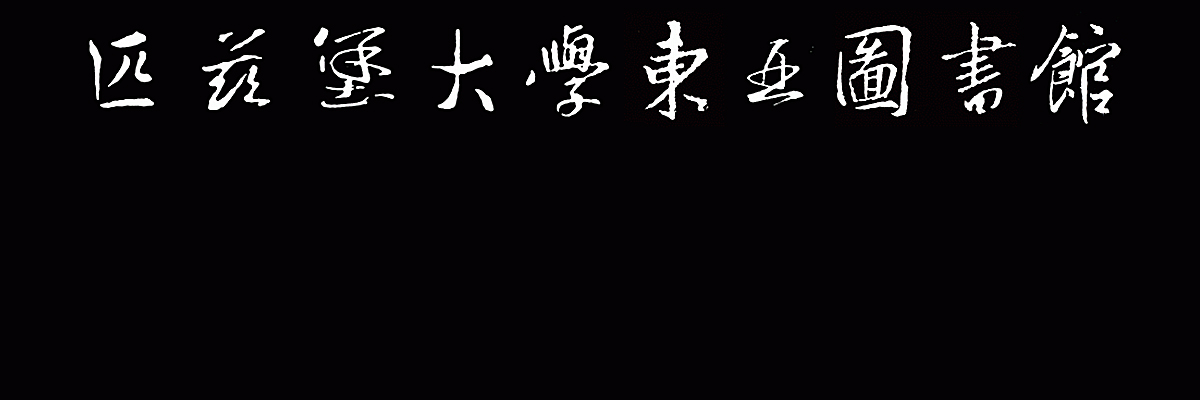


This collection include land deeds, property trade documents, possession draw documents, tax bills, etc. It includes 220 pieces that span over three hundred years from the Ming Dynasty (1368-1644) to mid-twentieth century. The majority of them are from Fujian Province and several are from other provinces.
Dr. Szeming Sze was a prominent Chinese medical expert who was instrumental in the creation of the World Health Organization (WHO). The collection consists of his notes, correspondence, and documents from the United Nations Conference in 1945 and the subsequent creation of the WHO. There are also copies of Dr. Sze's personal memoirs, as well as publications from the different conferences. In addition, this collection contains some newspaper clippings on the formation of the United Nations and the health organization, as well as a later interview with Dr. Sze about this process.
This collection includes small photographs of 104 Chinese political prisoners. Based on the physical condition and handwriting on the back of the photographs, the photos were taken between 1924 and 1946. The names of the prisoners are written on the back in French. It is believed that the men depicted were political prisoners from the French concession in Shanghai. During the 1930’s and 1940’s the Kuomintang (KMT) and the Chinese Communist Party (CCP) experienced a time of collaboration, split, and conflict. Those photos were preliminarily identified as leaders of the early Communist Party of China.
This collection contains 25 marriage documents from 1909 to 1997, including marriage certificates, wedding and engagement invitations, child bride agreements, uxorilocal marriage documents, remarriage agreements, divorce certificates and documents of marriage law. These marriage documents reflect the situations and transitions of marriage from the Qing Dynasty (1644 – 1911) to Republican China (1911-1949), and to the PRC period.
Decades ago EAL received a donation of Chinese student (most from Taiwan and Hong Kong) organization newsletters from universities in North America in the 60s and 70s last century (approximately more than 100 titles and thousands of issues). Those newsletters are not only valuable for research on the history of Chinese oversea students but also reflect Taiwan's political, economic, educational and other aspects. So far, the University of Pittsburgh is the institute that holds the largest collection on this subject.
History is complicated. A person's memory varies according to his or her geographical location, age, profession, family background, and many other different factors. Different experiences and memories also influence an individual's understanding of a historical incident. CR/10 is an experimental project aimed at collecting the true memories and impressions of ordinary people who experienced Cultural Revolution. The aim is to record the effect of the Great Proletarian Cultural Revolution on different areas and different people, as well as individuals' understanding of this historical incident after it happened. This project will also try to document the unequal impact of this historical event in China. For more information, please visit our corresponding exhibit site.
Contemporary Chinese Village Gazetteer Data (CCVG Data) is an open dataset consisting of data selected from the ULS collection of Chinese village gazetteers. Village gazetteers record statistical data on individual villages, covering the years from 1949 to the present showing the history and development of Chinese villages (the village is the most basic administrative unit in China).
Please visit here and here. The navigation tool created by George Washington University help people to discover more digital collections on Chinese studies in the US and Canada, allow users to find information about collections’ subject areas, subjects, keywords, time period, languages, formats and etc. Users can also use the map to browse collections based on institution locations or names.
The collection of color woodblock prints consists two sets of spectacular series of Japanese woodblock prints by the artist Tsukioka Kōgyo 月岡耕漁 (1869-1927); Nōgaku zue 能 樂 圖 繪, or Pictures of Noh, and Kyōgen gojūban 狂言五十番, or Fifty Kyōgen Plays. Nōgaku zue is a complete set of series, published at Tokyo between the Meiji years 30-35, or 1897-1902. The series is comprised of five volumes of 261 prints that were inspired by the plays of classical Japanese Noh theatre. Kyōgen gojūban comprises 50 prints inspired by the plays of traditional Japanese kyōgen theatre, the comedic counterpart to noh. The series published in Tokyo probably in 1927. Held by ULS Special Collections. For more information, please visit our corresponding exhibit site
The collection of 126 color woodblock prints was donated to the University of Pittsburgh in 2008 by Mr. and Mrs. Barry Rosensteel. While the earliest print dates to 1760, most of the prints were produced in the 1800s, while others were created in the 1900s. The work of over forty artists is represented in the collection. The images portray Japanese culture through detailed depictions of portraits, landscapes, wildlife, and theatrical performances, taking into account some of Japan’s rich history. The images selected for digitization constitute a significant portion of the total collection. Held by ULS Special Collections. For more information, please visit our corresponding exhibit site
This is a peer-reviewed annual publication on the history of business and manufacturing in Japan. Shashi are gray literature published by companies themselves to commemorate significant anniversaries, such as the 10th, 50th and 100th. Since the Meiji period, many Japanese companies have published Shashi. These books contain not only the company's history but also that of their industries. They reflect changes in culture, conditions and social environment. Shashi also presents history going back to the medieval and early modern periods, since so many Japanese companies have experienced extraordinary longevity. We publish the journal annually and all submissions are welcome. Please see information of for authors
East Asian Library
420 Hillman Library
University of Pittsburgh
3960 Forbes Avenue
Pittsburgh, PA 15260